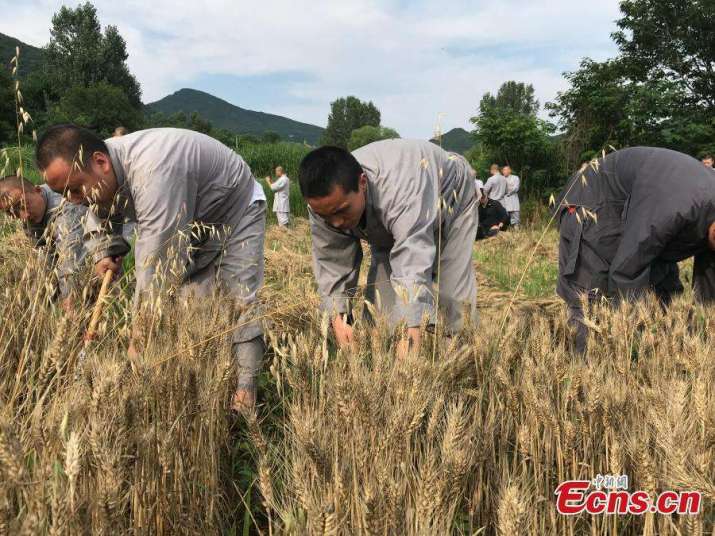
One hundred Shaolin monks and 50 overseas Shaolin disciples and students of the African Shaolin Kungfu class gathered up the sleeves of their robes and shirts on 21 June and set out to harvest eight hectares of wheat at a farm in Dengfeng, in China’s Henan Province.
For the Shaolin monks of Henan, the annual harvest is a form of Chan practice. The work in the field is also known as “outdoor work” (Chin: 出坡), and is an important part of their Buddhist practice.
The 1,400-year-old Shaolin temple—famed as the birthplace of martial arts traditions and Chan Buddhism—manages a 70-hectare farm, where the monks grow wheat, corn, vegetables, fruit, and medicinal herbs. This year eight hectares of the land was used to grow wheat.
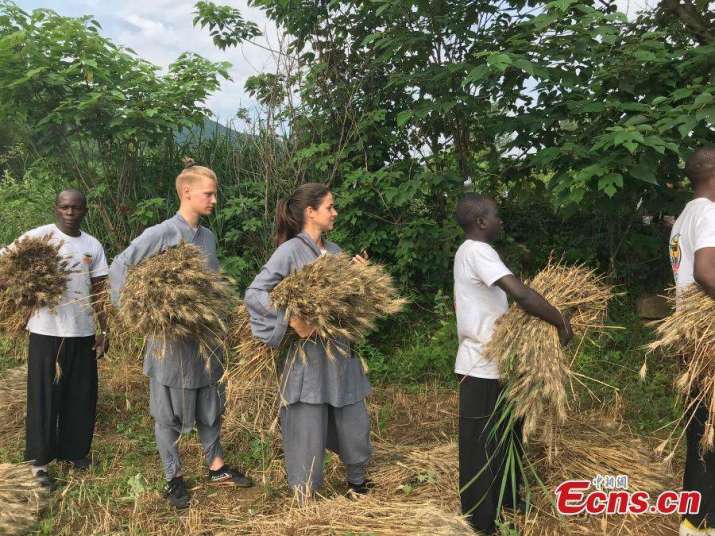
During the harvest season, groups of monks go through the process of cutting the crops, thrashing the grain, bagging it, and carrying it to the barn. All 400-plus monks take turns on the farm, even the abbot Shi Yongxin, and this year so did a contingent of foreign Shaolin disciples and students of the African Shaolin Kungfu class, who were given instruction beforehand on how to cut wheat with a sickle in the correct way, to avoid injury.
On 21 June, the monks and disciples could be seen wielding sickles to harvest the crop, operating the threshing machine, carrying bundles of ears and bags of wheat. The students of the African Shaolin Kungfu class sang some of their own folk songs while they worked, which apparently made songs float in the mountains, evidencing the Dharma joy all experienced.
According to Shi Yanzi, the monk in charge of the Shaolin Temple’s farm, the outside work is an important part of the daily practice of Chan Buddhism: “Farming is also a kind of self-cultivation,” he said. “We farm with the spirit of Chan, and plough and sow in our own mind too.” (South China Morning Post) In addition, the monks learn to value the sowing and harvesting process and come to appreciate the turn of the seasons.
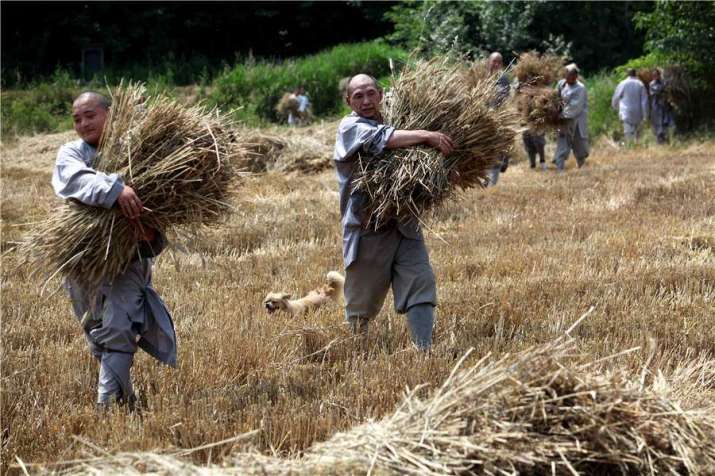
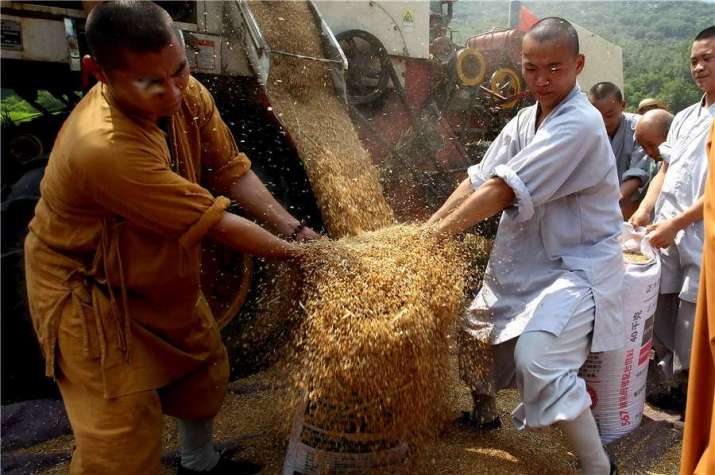
The farming tradition among Chan Buddhists in China has a long history. According to Master Yanzi, it can be attributed to Mazu Daoyi, one of most influential Chan Buddhist masters during the Tang dynasty (618–907) and his Dharma heir Baizhang Huaihai.
Baizhang made a rule that required monks to farm. According to stories, he did not exclude himself from this rule. And when, due to his old age, his disciples tried to bar him from working the field, he went on a hunger strike as a protest. This anecdote is associated with the proverb “a day without work is a day without food,” which is well known among Chan Buddhists, even today.
The farming tradition of the Chan monks helped them survive the anti-Buddhist persecutions in Chinese history better than other Buddhist traditions that relied mainly on donations for their livelihood. Even today, many Chan monasteries in China continue to operate farms.
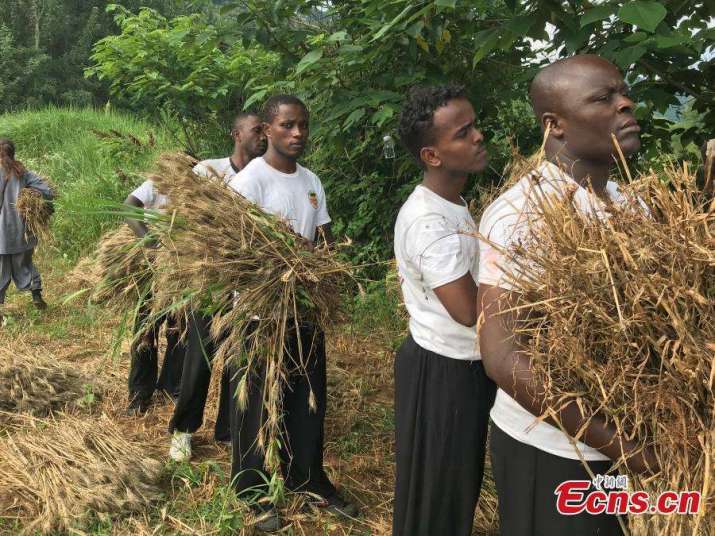
This self sufficiency was one of the reasons that made head abbot Shi Yongxin decide to reinstate the millennium-long tradition at Shaolin Monastery a couple of years ago, after it had been interrupted for several decades. In addition to the didactic aspects of the practice, Shi emphasizes that producing food in the temple’s fields also ensures food safety.
Over the past couple of years, the monks have become skilled farmers and the Chan temple farm has become an abundant source of food. The harvest this year is expected to yield 50,000 kilograms of wheat, which will be used to feed the monks at Shaolin Temple, and the teachers and students at its school. Surplus wheat, fruit, and vegetables from the farm will, according to Shaolin Temple, be distributed to families in need as part of the temple’s charity program.
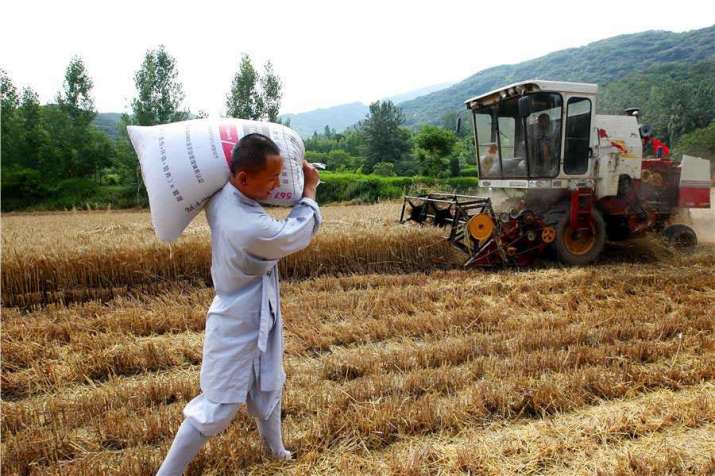
The Chan Buddhist Shaolin Temple in the central Chinese province of Henan is thought to have been established in 495 CE, although it has been destroyed and rebuilt many times throughout its history. The name of the monastery is derived from the nearby forests of Shaoshi Mountain, one of the seven peaks of the Song mountain range. The monastery and its nearby Pagoda Forest were listed as a UNESCO World Heritage Site in 2010. The monastery’s first abbot was Batuo (Buddhabhadra), a Dhyana meditation master believed to have come to China from India or Greco-Buddhist Central Asia in 464 to spread Buddhist teachings.
See more
Shaolin monks harvest wheat (China Daily)
Shaolin monks get joy from harvest (China Daily)
Reaping what they sow: Shaolin monks harvest wheat as a form of Zen practice (South China Morning Post)
Zen harvest for Shaolin monks (Global Times)
Shaolin Temple’s African apprentices help harvest wheat (People’s Daily)
The Wheat on Chan Farm of Shaolin Temple Has a Good Harvest (Shaolin Temple)













